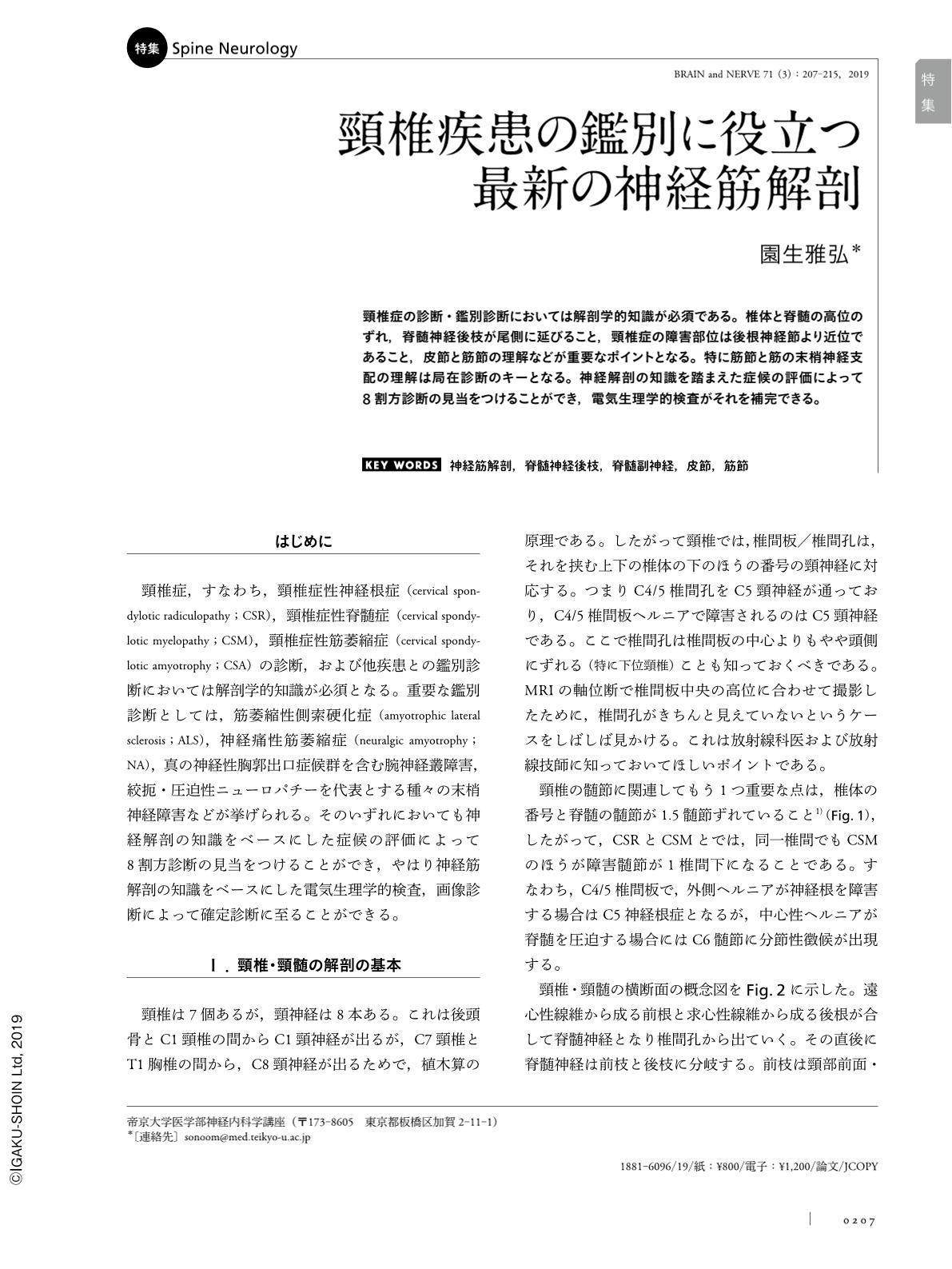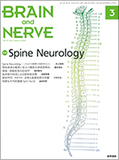Japanese
English
- 有料閲覧
- Abstract 文献概要
- 1ページ目 Look Inside
- 参考文献 Reference
- サイト内被引用 Cited by
頸椎症の診断・鑑別診断においては解剖学的知識が必須である。椎体と脊髄の高位のずれ,脊髄神経後枝が尾側に延びること,頸椎症の障害部位は後根神経節より近位であること,皮節と筋節の理解などが重要なポイントとなる。特に筋節と筋の末梢神経支配の理解は局在診断のキーとなる。神経解剖の知識を踏まえた症候の評価によって8割方診断の見当をつけることができ,電気生理学的検査がそれを補完できる。
Abstract
Neuromuscular anatomy is the indispensable background for the diagnosis and differential diagnosis of cervical spondylosis (CS), i.e. cervical spondylotic radiculopathy (CSR), cervical spondylotic myelopathy (CSM) and cervical spondylotic amyotrophy (CSA). The spinal cord level is 1.5 segments below the level of the adjacent vertebral body. For instance, lesion at the C5/6 intervertebral foramen causes C6 radiculopathy, whereas the cord compression at the C5/6 level presents segmental signs at C7 level. The dorsal rami of spinal nerve run down several segments from the original intervertebral foramen, which is thought to be the reason why back, especially interscapular pain is often experienced in CS. Multifidus is innervated by the single adjacent root and should be chosen for the needle EMG examination of the paraspinal muscles to document the cervical lesion. Spinal accessory nerve innervating the Trapezius runs upward within the spinal canal and is relatively spared in CS. Dermatome and myotome are the most important knowledge to be mastered. I created an original myotomal chart based on my experiences, some of which have been published. If we evaluate neurological signs with the basis of correct neuroanatomy, we can make 80% correct diagnoses. This is complemented by neuromuscular electrodiagnosis, also based on neuroanatomy.

Copyright © 2019, Igaku-Shoin Ltd. All rights reserved.


